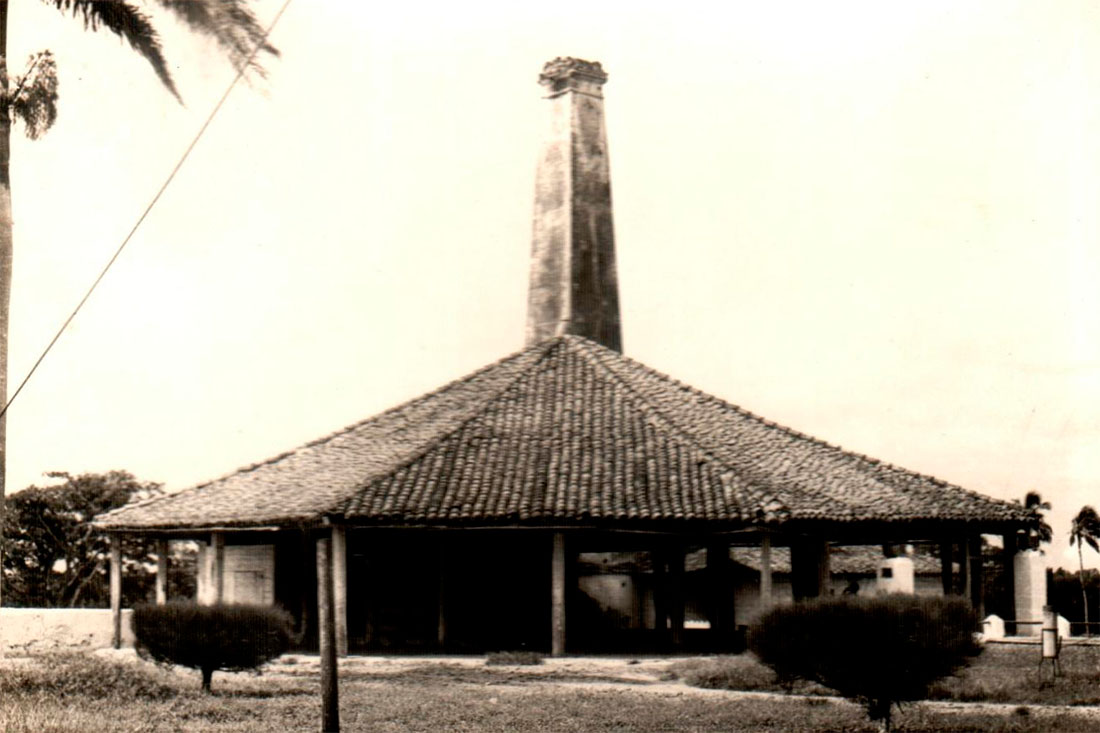On November 11th, 1868, Major Ignacio Agramonte joined the armed struggle during the Ten Years’ War at El Oriente sugar mill. Few inquired as much into the history of this place as the historian Gustavo Sed Nieves, so we share with you a fragment of an article of his authorship in which he explains the history of this place.
El Oriente sugar mill
“(…) The largest sugar mill in this region is one, which may be the best preserved ruins in Cuba in terms of mill and that I ask the people of Camagüey to take care of it like gold, they are the ruins of El Oriente sugar mill, I want to tell you that it is a true jewel for the history of Cuba and that must be cared for like gold …”
Manuel Moreno Fraginals
Its construction dates from 1844 as can be seen in an inscription to the fire in the hearth of the powerhouse. Initially, it was moved by oxen, and in the mid-1950s steam machinery was introduced.
With the introduction of steam machinery, El Oriente became the largest sugar mill in the jurisdiction of Puerto Príncipe, valued at 290,805 pesos.
It had 128 caballerias of land, including the pasture called Cañada de Palma, of which ten were planted with sugar cane; a crew of 120 slaves (the largest in Puerto Príncipe) and the following buildings:
- Dwelling house (masonry and clay tiles), 22 yards long, 7 wide and 6 high.
- Powerhouse (octagonal) of 18 yards in diameter, and 6 high up to the beam.
- Boiler House, 47 and half several long, 35 wide and high.
- Cooperage house, 40 yards long, 6 wide and 5 high.
- Kitchen, 15 yards long, 8 wide and 5 high.
- Female barracks, with three divisions, 40 yards long and 8 wide.
An interesting description of the place is offered by Antonio Perpiñá de San Lorenzo, a Piarist religious, who visited it in 1865:
“El Oriente sugar mill, located north of Sibanicú and three leagues from that town, is one of the most beautiful farms in the vast jurisdiction (…) what an amazing panorama! Immense reed beds, encircled by vast and lush forests, extend within sight between the entrance of the mill and the magnificent farmhouse, ornately placed on a short hill (…) the house of Mr. Luaces, in whose façade stands a superb portico overlooking the great sugar refinery.
The main piece of that house was a luxuriously decorated room, where the love of science, the arts, recreation and comforts of life represented by a harmonium with beautiful scores, several paintings of great merit, hunting objects, beautiful dried birds, a chest of drawers, rugs, and precious tapestries. Two beautiful cabinets could be seen on both sides of the living room, forming a set of rooms as extensive as it was lively (…) we found a small dining room between the living room and a delightful gallery, which looked north. That extensive gallery finished with an elegant balustrade. ”
In the 1859-60 harvest it produced 1,015 barrels, or 13,210 quintals, which represented 5.50 percent of the total production of Puerto Príncipe.
During the Great War the mill did not grind, and in 1888, its owner stated: “… that the buildings and machinery have been rebuilt the first in part by him and the second put in a condition to make it useful, since everything had deteriorated during the last war ”. At this time it should be noted that there is no evidence that the mill ever grinded again.
At the end of 1903, the large landowner Bernabé Sánchez Batista acquired the farm, to dedicate it to raising cattle.
The founders
The first owner of the mill was Francisco Iraola Serrano, an opulent lawyer from Puerto Príncipe. Iraola, from his marriage to Ana María Díaz Escanes, had eight children, three boys and five girls. One of these, named Concepción, had married, in May 1836, in the Greater Parish of Puerto Príncipe, with the young lawyer from Havana, José Martín Lorenzo Luaces Ferradas, who until his death, which occurred on June 8th, 1859, was the one who really administered and contributed to the splendor of El Oriente, since Mr. Iraola, in addition to attending other important businesses in Puerto Príncipe, held a position in the Treasury Section of the Royal Council of Administration of the Island.
Likewise, Iraola had adjusted the sale of half of the mill with luaLes, and, due to his death, the operation was formalized with his widow Concepción Iraola, by deed granted on July 3rd, 1861 for the amount of 100,000 pesos, which they would paid 10,000 pesos per year.
In the dividing account of the Luaces assets, the mill appears valued at 290,805 pesos, including the Cañada de Palma pasture, and as heirs his widow Concepción Iraola and his children Ana Joaquina, Serafina, Irene, Emilio, Antonio and Ernesto L. Luaces Iraola.
From that time until the beginning of the Great War, he was in charge of the Emilio L. Luaces Iraola (1840-1910) mill, a young doctor who had just completed his career in the United States.
The lawyer Francisco Iraola Serrano died in El Oriente on July 4th, 1868 and his daughter Conception, on September 25th of the same year, in Puerto Príncipe.
Translated by: Aileen Álvarez García






